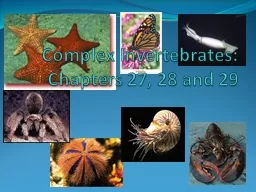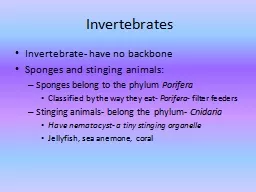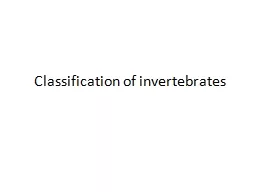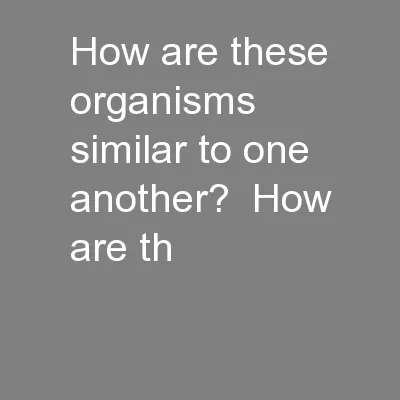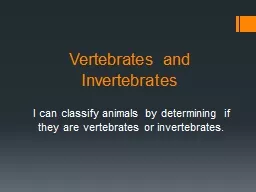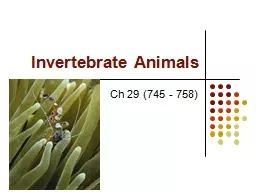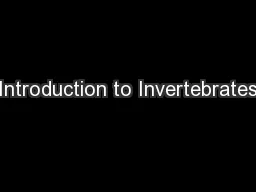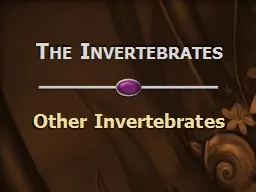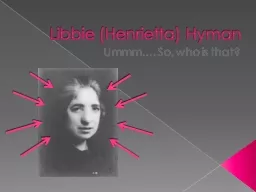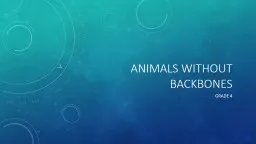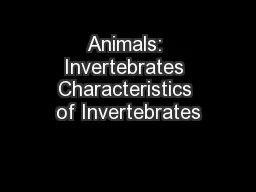PPT-Complex Invertebrates: Chapters 27, 28 and 29
Author : alida-meadow | Published Date : 2017-06-25
271 Mollusks I What is a Mollusk A Phylum Mollusca Origin from Latin Molluscus soft B Contains animals that look and act very differently from each other C Mollusks
Presentation Embed Code
Download Presentation
Download Presentation The PPT/PDF document "Complex Invertebrates: Chapters 27, 28 a..." is the property of its rightful owner. Permission is granted to download and print the materials on this website for personal, non-commercial use only, and to display it on your personal computer provided you do not modify the materials and that you retain all copyright notices contained in the materials. By downloading content from our website, you accept the terms of this agreement.
Complex Invertebrates: Chapters 27, 28 and 29: Transcript
Download Rules Of Document
"Complex Invertebrates: Chapters 27, 28 and 29"The content belongs to its owner. You may download and print it for personal use, without modification, and keep all copyright notices. By downloading, you agree to these terms.
Related Documents

